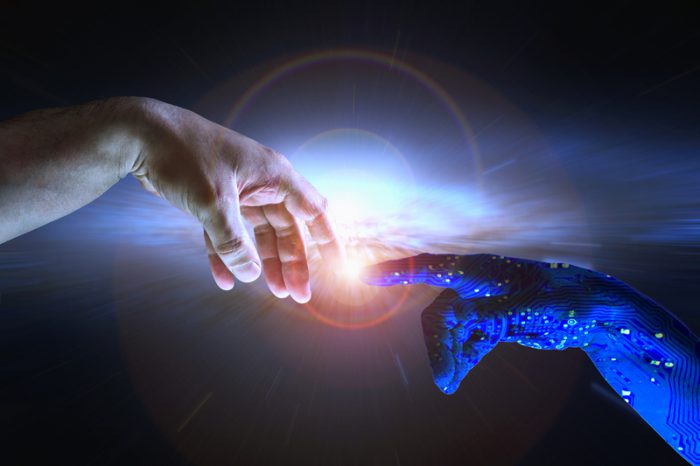You may have heard people talking about something called "AI" and wondered, just what is that supposed to be, anyway?
AI stands for Artificial Intelligence. This is a field of technology that tries to make machines that can think and learn independently (in other words, without any instruction from a human to help it along). These are also called deep learning machines.
These machines exist today (such as the speech recognition-driven home assistants like Google Home or Amazon Echo). They can observe a situation, take in information, and improve their abilities to achieve a goal based on that information. It's all quite remarkable, but these machines are still very slow learners compared to humans. Their "minds" take about 10 times as long as a human's to learn something.
Or at least, they were that slow.
DeepMind's steep climb
DeepMind created AlphaGo, a computer designed to play the ancient Chinese game, go. Go is a game that is considered even more difficult to master than chess. In 2016, AlphaGo played a five-game tournament against Lee Se-dol, one of the world's top go players. AlphaGo won 4 wins to 1 loss. (Getty Embed)
DeepMind is an AI research company owned by Google. They have recently announced that their newest machines can learn at a speed just below that of a human. It's an amazing achievement that has happened amazingly fast. And how did they do it?
Okay, you won't be surprised to know that such an incredible technological feat is also extremely difficult to explain. Makes sense, right? But in a nutshell...
Deep learning machines are made up of thousands of neural networks, which are based on neurons in our own brain. Each neural network searches for specific patterns, then it passes this information on to the other networks. Eventually, the information is passed through all of the networks, until the machine receives enough new information to absorb it and make decisions based on that information.
DeepMind uses something called "neural episodic control". This allows their machines to act much faster, without waiting for the entire system of neural networks to process the information. It's almost as though it allows the machine to act on a hunch or instinct. Thanks to this, DeepMind is getting closer to the same learning speeds that we humans take for granted.
Where can this lead?
Data was an android character on the TV series, Star Trek: The Next Generation. Data's greatest wish on the show was to be able to feel emotions as humans do. Will there one day be a robot that can laugh or feel sad? (Getty Embed)
Deep learning is considered to be the most important next step to building a robot like the droids and androids in science fiction films such as Star Wars and Star Trek. Robots that can think and learn for themselves.
Because sure, computers have long been able to solve in seconds mathematical problems that could take humans weeks or even years. But those achievements are still the result of being programmed. These computers are tools used to perform a task, like a wrench is used to tighten or loosen a bolt.
A deep learning machine, on the other hand, could eventually get to the point where it could fend for itself. It could solve its own problems and improve its methods and behaviour based on what it observes. And, it could even become "self-aware". It would think of itself in the same way that we do: as a creature that is alive!
What do you think? Are you ready for a robot that can think for itself?
 Artificial Intelligence machines are getting closer to learning in a way that is similar to humans. (© John Williams | Dreamstime.com)
Artificial Intelligence machines are getting closer to learning in a way that is similar to humans. (© John Williams | Dreamstime.com)










Cool 😀
Cool 🙂 🙂 🙂